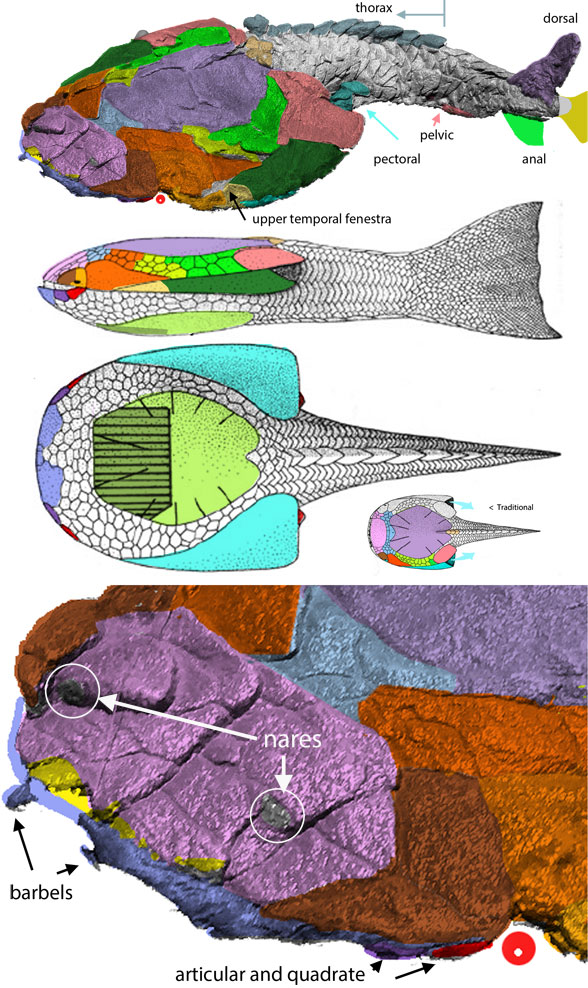Sometimes it is worthwhile
to gather together and compare related taxa in one image so we can more clearly see and appreciate both the subtle and obvious traits and proportions that lump and separate them in analysis. These taxa (Fig 1) are all basal gnathostomes close to or within traditional placoderms in the LRT. We looked at each one earlier. Here they are collected together and updated letting one inform on another. None are larger than a human hand. Some are as small as a finger.
This is a difficult bunch. The original authors assigned several to lobe fin clades.

The fifth flat, fat basal gnathostome,
Early Devonian Drepanaspis (Fig 2), is re-presented here with more attention to detail and revised DGS colors based on the Bauplan of Bianchengichthys (top image Fig 1). Drepanaspis lacks a thoracic shield, but has a heavily scaled thorax and tail, as in Middle Devonian Miguashaia, Early Devonian Dialipina and Late Silurian Guiyu (Fig 1). Under closer examination with Bianchengichthys and the other three taxa (Fig 1) as my new guides:
Here in Drepanaspis nares are identified atop the nasals, as in Bianchengichthys.
Here a premaxilla (yellow) with tiny teeth is revealed beneath a broken piece of nasal.
Here a tiny vestige of a quadrate (red) is located anterior to the tiny orbit notch.
Here the former caudal fin is reinterpreted as a dorsal fin appearing prior to what appears to be a broken off caudal fin, creating a sort of double caudal fin.
If you know of another published interpretation of these five taxa
with as much attention to detail, let us all know in the comments. Mistakes will be corrected.
Once again
having a good Bauplan (Fig 1) really helps to understand difficult taxa (Fig 2) ~ one more reason to keep adding taxa to your own analysis and studies. Each one informs on the other, especially in the most difficult taxa.

